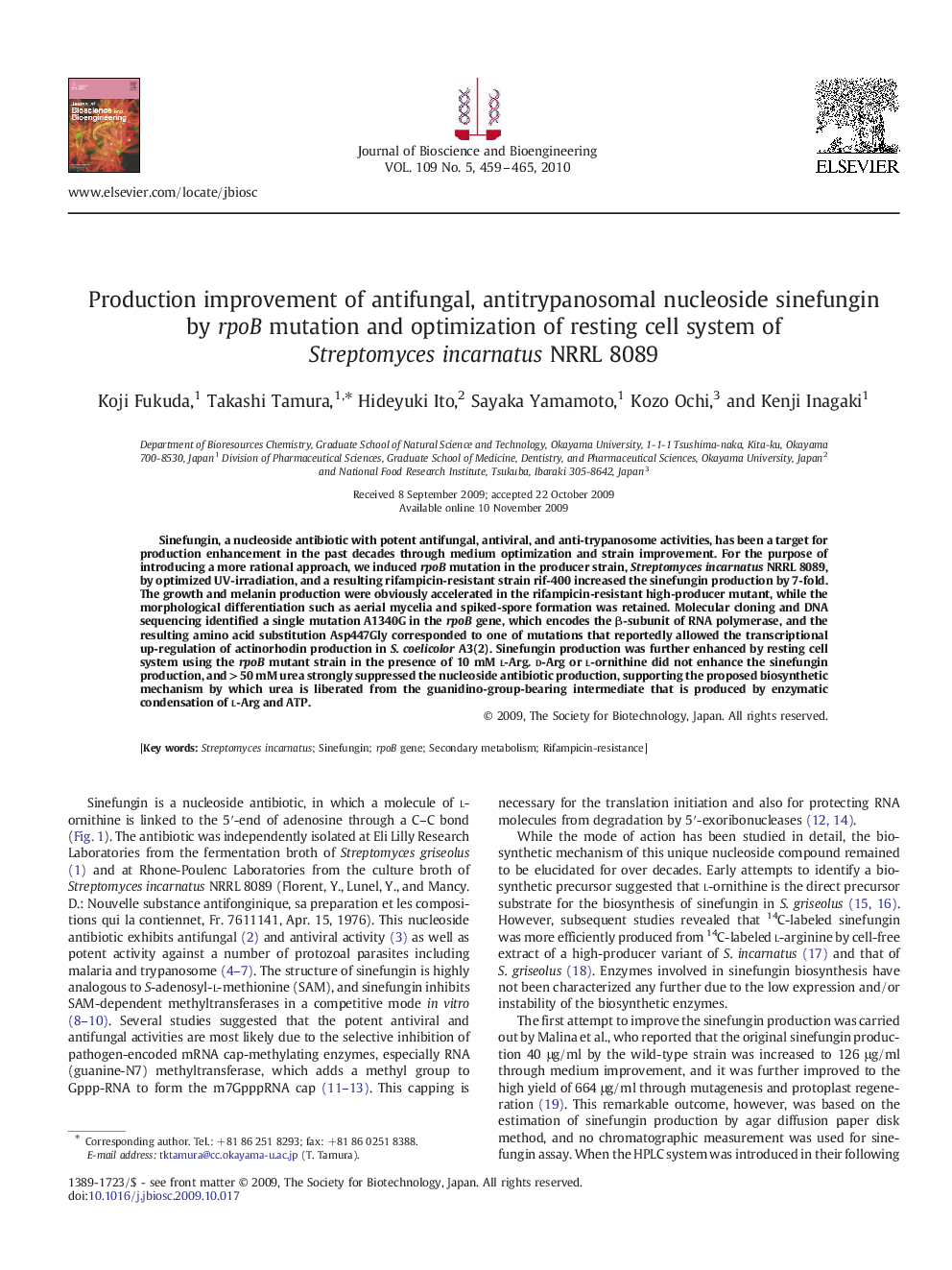| Article ID | Journal | Published Year | Pages | File Type |
|---|---|---|---|---|
| 21223 | Journal of Bioscience and Bioengineering | 2010 | 7 Pages |
Sinefungin, a nucleoside antibiotic with potent antifungal, antiviral, and anti-trypanosome activities, has been a target for production enhancement in the past decades through medium optimization and strain improvement. For the purpose of introducing a more rational approach, we induced rpoB mutation in the producer strain, Streptomyces incarnatus NRRL 8089, by optimized UV-irradiation, and a resulting rifampicin-resistant strain rif-400 increased the sinefungin production by 7-fold. The growth and melanin production were obviously accelerated in the rifampicin-resistant high-producer mutant, while the morphological differentiation such as aerial mycelia and spiked-spore formation was retained. Molecular cloning and DNA sequencing identified a single mutation A1340G in the rpoB gene, which encodes the β-subunit of RNA polymerase, and the resulting amino acid substitution Asp447Gly corresponded to one of mutations that reportedly allowed the transcriptional up-regulation of actinorhodin production in S. coelicolor A3(2). Sinefungin production was further enhanced by resting cell system using the rpoB mutant strain in the presence of 10 mM l-Arg. d-Arg or l-ornithine did not enhance the sinefungin production, and > 50 mM urea strongly suppressed the nucleoside antibiotic production, supporting the proposed biosynthetic mechanism by which urea is liberated from the guanidino-group-bearing intermediate that is produced by enzymatic condensation of l-Arg and ATP.
